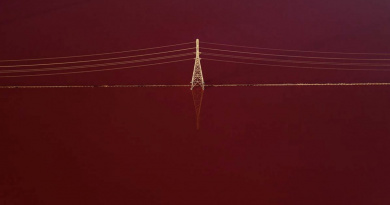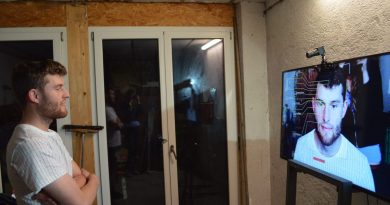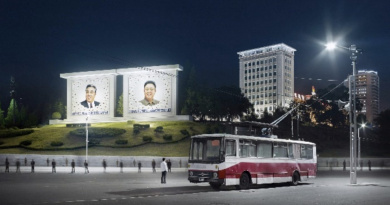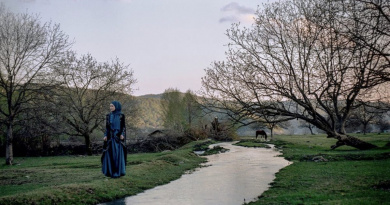Vibrant color portraits, conceptual images, and fashion editorial photographs by 15 emerging black photographers are the subject of this exhibition that fuses the genres of art and fashion photography in ways that break down their long-established boundaries. Over 100 photographs–many found in traditional lifestyle magazines, ad campaigns, and museums, as well as on the individual’s social media channels, reinfuse the contemporary visual vocabulary around beauty and the body with new vitality and substance. The images open up conversations around the roles of the black body and black lives as subject matter; collectively, they celebrate black creativity and the cross-pollination between art, fashion, and culture in constructing an image.
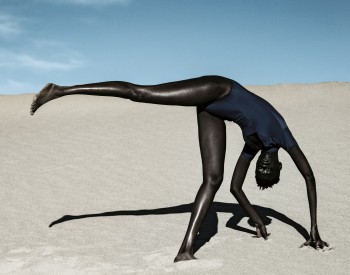
Dana Scruggs, Nyadhour, Elevated, Death Valley, California, 2018
Seeking to challenge the idea that blackness is homogenous, the photographs serve as a form of visual activism. It’s a perspective often seen from this loose movement of emerging talents creating photography in vastly different contexts– New York and Johannesburg, Lagos, and London. Often made in collaboration with black stylists and fashion designers, they present new perspectives on the medium of photography and the notions of race and beauty, gender, and power.
Curated by writer and critic Antwaun Sargent, this exhibition includes selected works from groundbreaking contemporary photographers including Campbell Addy, Arielle Bobb-Willis, Micaiah Carter, Awol Erizku, Nadine Ijewere, Quil Lemons, Namsa Leuba, Renell Medrano, Tyler Mitchell, Jamal Nxedlana, Daniel Obasi, Ruth Ossai, Adrienne Raquel, Dana Scruggs, and Stephen Tayo.
The New Black Vanguard: Photography between Art and Fashion
Exhibition
Dec 17, 2021 – April 17, 2022
DIA - Detroit Institute of Arts
5200 Woodward Avenue, Detroit, MI 48202
Founded in 1885, the museum was originally located on Jefferson Avenue, but, due to its rapidly expanding collection, moved to the current site on Woodward Avenue in 1927. The Beaux-Arts building, designed by Paul Cret, was immediately referred to as the "temple of art." Two wings were added in the 1960s and 1970s, and a major renovation and expansion that began in 1999 was completed in 2007.
The museum covers 658,000 square feet that includes more than 100 galleries, a 1,150-seat auditorium, a 380-seat lecture/recital hall, an art reference library, and a state-of-the-art conservation services laboratory.
The DIA's collection is among the top six in the United States, with more than 65,000 works. The foundation was laid by William Valentiner, who was director from 1924 to 1945 and acquired many important works that established the framework of today's collections. Among his notable acquisitions are Mexican artist Diego Rivera's Detroit Industry fresco cycle, which Rivera considered his most successful work, and Vincent van Gogh's Self-Portrait, the first Van Gogh painting to enter a U.S. museum collection.
A hallmark of the DIA is the diversity of the collection. In addition to outstanding American, European, Modern and Contemporary, and Graphic art, the museum holds significant works of African, Asian, Native American, Oceanic, Islamic, and Ancient art. In 2000, the DIA established the General Motors Center for African American Art as a curatorial department in order to broaden the museum's collection of African American art.
TAGREE, I love the cultural work you do, I donate to show you my sincere appreciation:
or become a reader with a TAGREEplus+Pass for unlimted access




